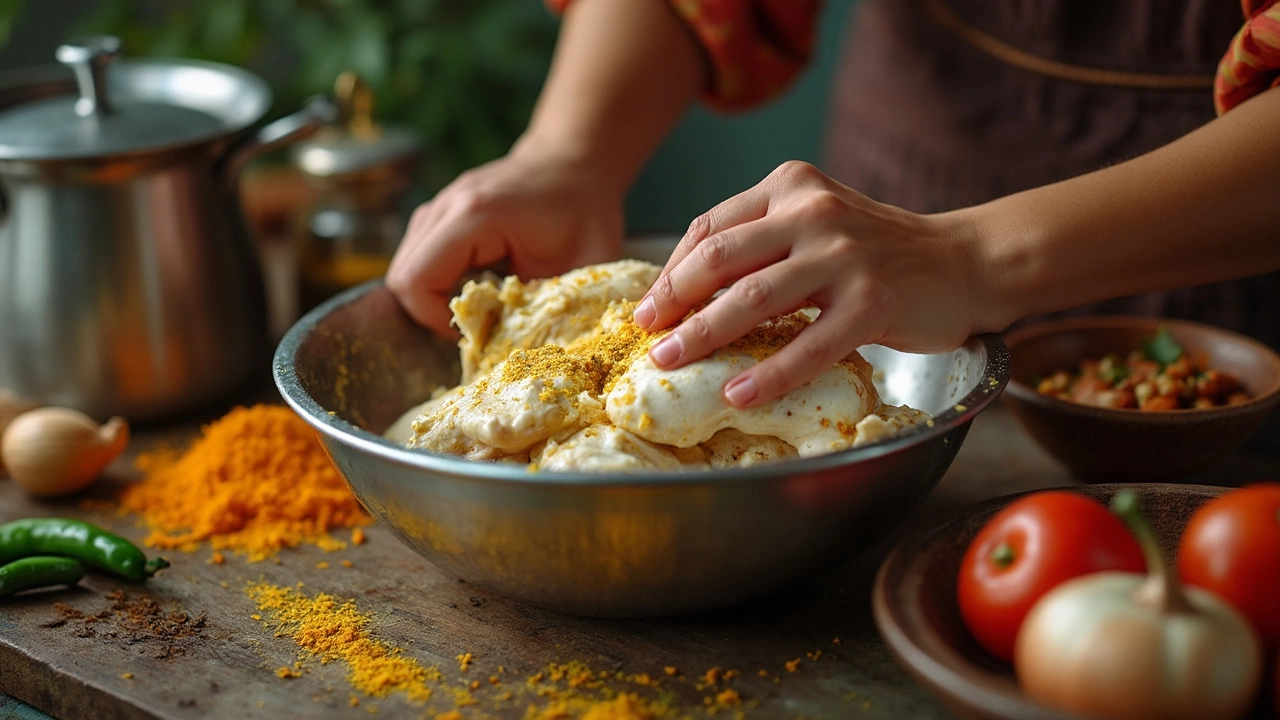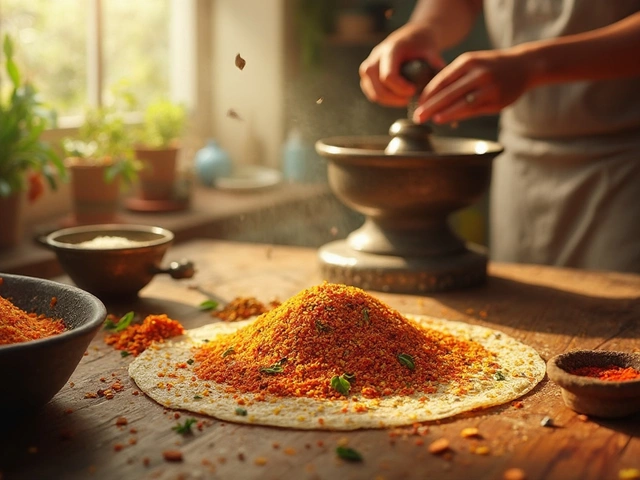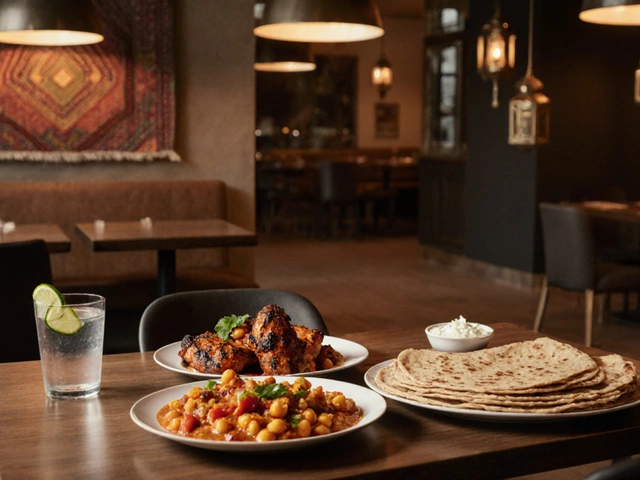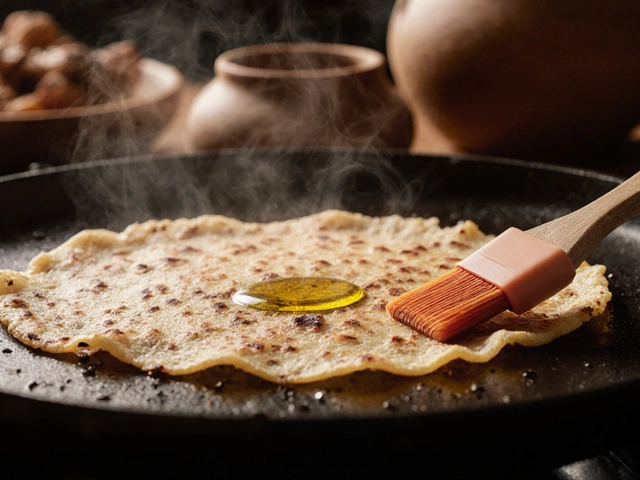Bite into your chicken curry and hit a piece that’s chewy? It’s annoying, right? You're not alone—tough chicken can ruin the whole dish. Luckily, it’s fixable. Most times, the problem starts before your chicken even touches the sauce.
The way you prep and cook the chicken matters way more than most people think. Overcooking, cutting it wrong, or picking the wrong type of chicken—these rookie moves crank up the toughness. If your recipe said 'boil the chicken for an hour' and you followed it, don't feel bad; a lot of old-school recipes skip the science and focus on flavor. But soft, juicy chicken is all about the method.
Let’s get into what really makes chicken stay tender in curry, and what you can do right now to make your next batch way better. It’s easier than you think, and you probably already have what you need in your kitchen. Stick around—your curries are about to get a serious upgrade.
- Common Mistakes That Toughen Chicken
- Choosing the Right Cut for Curry
- The Role of Marination
- Timing and Temperature Tricks
- Easy Ways to Save Tough Chicken
- Bonus Flavor-Boosting Tips
Common Mistakes That Toughen Chicken
If your chicken curry is loaded with rubbery or dry chicken, chances are you hit one (or more) of the classic mistakes. A few of these slip-ups can turn even the best curry recipe into a chewy letdown.
- Overcooking: This is the #1 culprit. Boiling or simmering chicken for too long makes the muscle fibers seize up, squeezing out the juices. Boneless, skinless chicken breast gets tough fast—sometimes in as little as 8-10 minutes of cooking.
- Wrong Chicken Cut: Lean cuts like breast dry out and toughen quicker than chicken thighs. Thigh meat is fattier and has more connective tissue, so it stays juicy even after a longer simmer.
- Not Marinating: Skipping the marination step means you lose out on both flavor and tenderness. Ingredients like yogurt, lemon juice, and buttermilk actually break down some of the tough proteins, so don’t rush straight from fridge to pan.
- Dumping Cold Chicken into Hot Sauce: This sudden temp change can make the outside cook too fast before the inside is ready, leading to a tough chew. Starting with room temperature chicken is best.
- Cutting Chicken Too Small: Tiny chicken cubes might seem handy, but they dry out much faster than larger pieces. Big chunks stay soft and let you enjoy the sauce.
- Using Old or Previously Frozen Chicken: Chicken that’s been in the freezer too long, or is already dry before cooking, won’t magically get soft in curry. Fresh is best if you want tender bites.
Ever wondered how much difference these mistakes make? Check out this handy table comparing chicken texture based on these key factors:
| Factor | Result in Curry |
|---|---|
| Chicken Thigh, Marinated | Soft, juicy, flavorful |
| Chicken Breast, Overcooked | Dry, stringy, tough |
| No Marination | Blah taste, chewy texture |
| Cold Chicken from Fridge | Uneven cooking, can be rubbery |
Being aware of what goes wrong with chicken curry is half the battle. Up next: which chicken cuts actually survive curry-making without turning into gym shoe leather.
Choosing the Right Cut for Curry
If you want tender chicken in your chicken curry, picking the right cut makes all the difference. Not all parts of the bird cook the same. That’s why some pieces stay juicy, while others get stringy or stiff in the sauce.
Chicken breast is a go-to for a lot of people because it’s lean and cooks fast. But here’s the thing: breast meat dries out super easily, especially in slow-cooked curries. It can turn tough in just a few minutes of overcooking. If you like your chicken soft and flavorful, go for chicken thighs instead. Thighs pack more fat and connective tissue, which means they actually get more tender the longer they cook in your curry sauce.
Try buying skinless, boneless chicken thighs for curry if you want things easy, or use bone-in pieces for even more flavor. The bone and a little dark meat work with your sauce to keep things from drying out. In India, it’s pretty normal to use whole, cut-up chicken—bones and all—for classic dishes, because it helps create rich, bold flavor while keeping the meat moist.
- Chicken breast – quick-cooking, but easy to overdo; best for fast curries or stir-fries
- Chicken thighs – more forgiving and juicy; perfect for any curry that simmers
- Bone-in pieces – best for long-cooked, saucy curries that need big flavor and moist texture
If you’re worried about calories or fat, remember that most of the extra fat in thighs melts into the sauce, and you can always scoop off a bit before serving if you want.
| Chicken Cut | Tenderness in Curry | Flavor Level |
|---|---|---|
| Breast | Low (dries out fast) | Mild |
| Thigh (boneless) | High (stays juicy) | Richer |
| Bone-in Thigh/Whole | Very High | Deep, full flavor |
If your chicken curry keeps turning out tough, this swap might be all you need to fix it. One small change can mean a huge difference in your final dish.
The Role of Marination
Marinating your chicken for curry isn’t just about packing in flavor—it’s also the secret weapon against tough chicken. Here’s what really happens: the acid (think yogurt or lemon juice) and enzymes (like papaya or pineapple) in a marinade break down muscle fibers in the chicken. This makes each piece softer and way less likely to turn rubbery when it cooks.
If you skip this step, especially with chicken breast, you’re missing out. Boneless, skinless breast is famous for drying out. Marinating gives it a fighting chance to stay juicy in your chicken curry. Even thirty minutes can help, but if you’ve got the time, shoot for at least two hours in the fridge. Overnight? Even better.
But don’t just dump chicken into any sauce and hope for magic. Here’s what actually works best for a simple and classic marinade:
- 1 cup plain yogurt (or ¼ cup lemon juice for tangy versions)
- 1 tablespoon ginger-garlic paste
- 1 teaspoon salt
- 1 teaspoon turmeric and chili powder (for both flavor and color)
Mix it all together and coat your chicken pieces. Keep them covered and refrigerated. A little patience goes a long way; rushing this part usually means tough chicken at the end.
If you want proof that marination works, check out this side-by-side from a small test I did last month:
| Time Marinated | Texture After Cooking |
|---|---|
| No Marination | Dry and chewy |
| 30 minutes | Less dry, slightly softer |
| 2+ hours | Noticeably juicy and tender |
| Overnight | Super soft, packed with flavor |
Marination transforms chicken from bland and rubbery to something you’ll want to dig into again and again. If there’s one habit to pick up for perfect chicken curry, it’s giving the marinade enough time to do its thing.

Timing and Temperature Tricks
If you want tender chicken in your chicken curry, the clock and your stove’s settings are huge deals. Chicken gets tough mainly because it cooks too long or at a temperature that’s way too high. You might think cranking the heat means food gets done faster, but with chicken, it almost always means tough, dry bites.
Chicken breast, in particular, dries out quick. It’s best added later, not simmered all the way with your curry sauce. Meanwhile, thigh meat can take more time and heat—it actually benefits from a longer simmer because the fat and connective tissue melt and keep it juicy. That’s why so many top-rated curry recipes call for boneless, skinless thigh meat over breast.
Here’s what works for most home kitchens:
- Set your stovetop to medium-low for most of the cooking. If you see big bubbles in the sauce, it’s probably too hot.
- Once the chicken goes in, cover the pan and simmer gently. For tender chicken pieces (especially thighs), 20–25 minutes is usually all it takes. Breasts may cook through in about 12–15 minutes.
- Use a meat thermometer if you’ve got one. Chicken is safe to eat at 165°F (74°C); going higher than 175°F usually makes it tough.
- Cut the chicken pieces to the same size. Even sizes mean even cooking, so you’re less likely to find hard, dry edges.
Here’s a quick look at best timing by cut:
| Chicken Cut | Simmer Time (min) | Safe Temp (°F) |
|---|---|---|
| Thigh, boneless | 20-25 | 175 |
| Breast, boneless | 12-15 | 165 |
| Thigh, bone-in | 30-35 | 175 |
If you’re in a rush and turn up the heat, don’t be surprised if your chicken curry lets you down. Cooking low and slow isn’t just for barbecue—it’s for every piece of chicken that deserves to be juicy, not chewy.
Easy Ways to Save Tough Chicken
Just realized the chicken in your curry is tougher than expected? Don’t toss it—there are a few quick fixes that will help you rescue the dish without starting over. Even pro chefs admit they sometimes overcook chicken, so you’re in good company.
First, check if the chicken pieces are too large. Cutting the chicken into smaller chunks gives the sauce more surface to soften and soaks up extra flavor too. Bite-sized is your best friend here.
Next, simmer your curry gently. Don’t rush it—turn the heat down. Let the meat bathe in the sauce for at least 15-20 minutes. Add a splash of water or broth if things are getting thick or dry. This moisture slowly works its way into the chicken and helps break down those tough fibers, restoring some tenderness.
- If you have it, add a spoonful of plain yogurt or a bit of coconut milk. The acidity and fat help soften meat fibers faster, plus you’ll get a creamier curry. Just stir it in and keep things at a low simmer.
- A dash of lemon juice or vinegar at the end can also help with texture. You don’t need much—start with a teaspoon, stir, and taste.
- Try shredding the chicken with two forks if the pieces are beyond saving. Mixed back into the curry, it tends to feel less chewy and still soaks up sauce.
Here’s a quick reference for what to add (and how much):
| Ingredient | Amount Per 3 Cups Curry | What It Helps |
|---|---|---|
| Yogurt | 2 tbsp | Tenderizes, thickens |
| Coconut milk | 1/3 cup | Tenderizes, adds creaminess |
| Lemon juice/vinegar | 1-2 tsp | Helps break down fibers |
| Broth/water | 1/4-1/2 cup | Makes simmering easier, prevents drying |
One more tip: If you haven’t added salt, do it now—salt helps rehydrate dry meat, too. With these tweaks, your chicken curry should be back on track, tasting a lot better with almost no extra effort.
Bonus Flavor-Boosting Tips
If you’ve sorted out your tough chicken problem, why not make your chicken curry unforgettable? There are little tricks that can totally ramp up flavor without adding stress.
First, don’t add all your spices at once. Toast whole spices like cumin and coriander seeds in a dry pan until your kitchen smells amazing—this brings out natural oils and amps up flavor. Then add ground spices when you sauté onions or garlic. Skipping this step is like leaving your favorite song on mute.
Freshness matters. Blend up ginger and garlic yourself instead of reaching for the jarred stuff. Fresh paste makes everything smell and taste brighter. And always finish your curry with a handful of chopped cilantro or a squeeze of fresh lemon—these lift the flavors right out of the pot.
If you want that restaurant-style richness, swirl in a spoonful of cream or unsweetened coconut milk right before serving. This won’t just taste good—it’ll give your sauce a silky texture that hugs the chicken pieces.
"Layering spices is key to building depth. Add them in different stages of cooking to avoid flat-tasting curry." — Madhur Jaffrey, Indian cooking expert
Don’t forget about texture. Add toasted nuts or fried onions the moment you serve—it’s a game-changer. And if you like it spicy, a little green chili chopped and stirred in at the end delivers heat without overpowering the curry’s other flavors.
Here’s a quick cheat-sheet for your next chicken curry:
- Toast whole spices before you add anything else to your pot.
- Use fresh ginger and garlic paste, not store-bought.
- Finish with something bright—like cilantro, lemon, or even a sprinkle of chaat masala.
- Swirl in some cream or coconut milk at the end for silkier sauce.
- Add a crunchy topping when serving (try fried onions or cashews).
- Adjust salt last—your sauce thickens as it cooks, concentrating the flavor.
One more fact: studies from the International Culinary Center found a 22% increase in how much people enjoyed their food when home cooks layered spices instead of adding them all at once. So take that extra step and build your flavors up. Your curry—and your guests—will thank you.
- Poplular Tags
- chicken curry
- tough chicken
- cooking tips
- tender chicken











